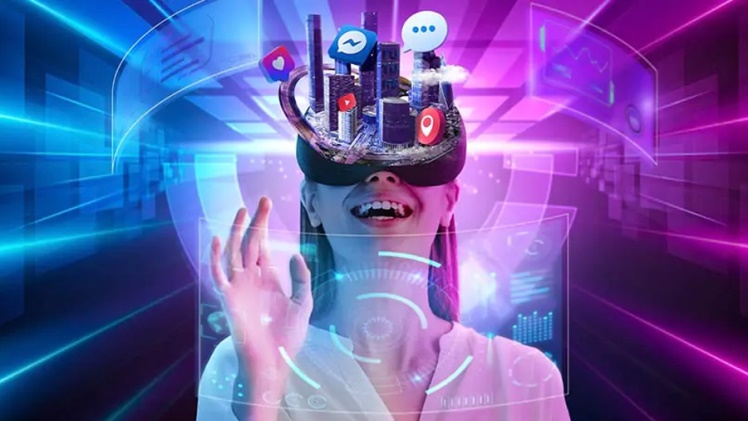5G, the fifth-generation mobile network, has been a game-changer in the world of telecommunications, delivering faster data speeds, lower latency, and enhanced connectivity. As the 5G rollout continues to expand globally, its future holds immense potential for transforming industries, enabling new technologies, and driving economic growth. This article explores the future of 5G, delving into its potential applications and implications for society.
TikTok – Short video apps rising
TikTok has become a global phenomenon in the past few years, with its user base growing exponentially. The app has seen unprecedented success, particularly among Gen Z users, and is now one of the most popular social media platforms in the world.
Since its launch in 2016, TikTok has grown to have over 800 million active monthly users worldwide. It’s become a hub for creativity and self-expression, allowing users to create and share short videos with friends and followers. It’s also become an important platform for brands to reach their target audiences, as well as for influencers to build their personal brand.
TikTok’s success can be attributed to its unique features that make it stand out from other social media platforms. That’s how to go viral to get more TikTok likes. Its algorithm is designed to show users content that they’re likely to engage with, while its “For You” page curates personalized video recommendations based on what users watch and like. Additionally, its Duet feature allows users to collaborate on videos together and create unique content.
The app has also seen success due to its focus on creating a safe environment for users of all ages. It has implemented various measures such as age restrictions and parental control settings that help ensure that younger users are protected from inappropriate content.
Overall, TikTok’s success story is one of innovation and growth – it’s quickly becoming one of the most popular social media platforms in the world thanks to its unique features and commitment to safety.
Internet of Things (IoT) Expansion
One of the most significant impacts of 5G will be the acceleration of IoT growth, enabling billions of connected devices to communicate and exchange data seamlessly. With 5G’s increased capacity and reduced latency, the IoT ecosystem will experience:
Enhanced real-time data processing: 5G networks will enable devices to process and analyze data in real-time, leading to more efficient and responsive IoT applications.
Edge computing integration: The convergence of 5G and edge computing will facilitate decentralized data processing, reducing latency and improving the performance of IoT devices.
Smart Cities and Infrastructure
The future of 5G holds great promise for the development of smart cities, where connected devices and sensors can monitor and optimize urban systems, such as transportation, energy, and waste management. Key applications of 5G in smart cities include:
Intelligent traffic management: 5G connectivity will enable real-time traffic monitoring and data-driven decision-making, reducing congestion, optimizing traffic flow, and improving public transportation.
Environmental monitoring: 5G-powered IoT sensors infosportsworld can track air quality, water usage, and waste generation, providing data for sustainable urban planning and resource management.
Autonomous Vehicles and Transportation
The widespread adoption of 5G will play a crucial role in advancing autonomous vehicle technology, as the low-latency, high-bandwidth network is essential for vehicle-to-vehicle (V2V) and vehicle-to-infrastructure (V2I) communication. Key implications of 5G for autonomous vehicles include:
Enhanced safety: 5G connectivity will enable autonomous vehicles to share real-time data on road conditions, traffic, and potential hazards, improving situational awareness and reducing accidents.
Optimized logistics: In the freight and delivery sectors, 5G-powered autonomous vehicles can enable more efficient routing, fuel management, thebirdsworld and fleet management, reducing operational costs and environmental impact.
Immersive Technologies: Virtual Reality (VR), Augmented Reality (AR), and Mixed Reality (MR)
The high-speed, low-latency capabilities of 5G will unlock the full potential of immersive technologies such as VR, AR, and MR, enabling more realistic and interactive experiences. Key applications of 5G in immersive technologies include:
Remote collaboration: 5G-powered VR and AR solutions can facilitate remote collaboration, training, and education, bridging geographical barriers and enhancing productivity.
Interactive entertainment: The increased bandwidth and low latency of 5G will enable more immersive gaming experiences, as well as new forms of interactive media and live events.
Telemedicine and Healthcare
5G connectivity holds great potential for transforming healthcare and telemedicine, making it possible to deliver high-quality care remotely and improve patient outcomes. Key applications of 5G in healthcare include:
Remote patient monitoring: 5G-powered IoT devices can collect real-time patient data, enabling healthcare providers to monitor patients’ conditions remotely and intervene proactively.
Remote surgery: The low latency and high bandwidth of 5G can facilitate remote surgery, allowing specialists to perform complex procedures from a distance using robotic surgical systems.
